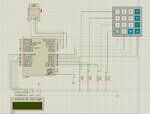Linspire
Full Member level 5
Does anyone here experiencing high cpu load during simulation ?
I having it for simulating the keypad + sd card + lcd with 20Mhz.
Even I reduce the speed of crystal, it still occurs.
Regards
Linspire
I having it for simulating the keypad + sd card + lcd with 20Mhz.
Even I reduce the speed of crystal, it still occurs.
Regards
Linspire

